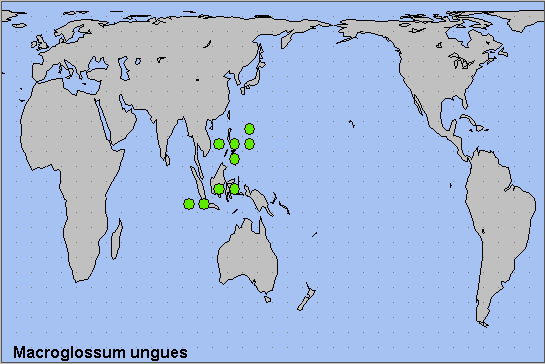

Macroglossum ungues Rothschild & Jordan, 1903, Novit. zool. 9 (suppl.): 622 (key), 624 (key), 643. Type locality: [Indonesia:] Buru, <<Kayeli>>.
Nearly identical in pattern to Macroglossum sitiene, but smaller; forewing more obtuse, the outer margin more convex; male antenna comparatively longer and stouter. Forewing upperside first discal line more curved than in Macroglossum sitiene, nearer the antemedian band in the middle; subapical spot in cell Rs3 more prominent. Hindwing upperside more yellow-washed basally than in Macroglossum sitiene.
In the male genitalia, harpe longer than in Macroglossum sitiene. Phallus with 2 processes: the dorsal much longer than in Macroglossum sitiene; the ventral shorter, dentate.
OVUM: Unknown.
LARVA: Unknown.
PUPA: Unknown.
Larval hostplants. Unknown.
China: ?
Indonesia, from Java to Ambon, and also the Philippines. The record from China is suspect.

 Return to Sphingidae of the Eastern Palaearctic species list
Return to Sphingidae of the Eastern Palaearctic species list